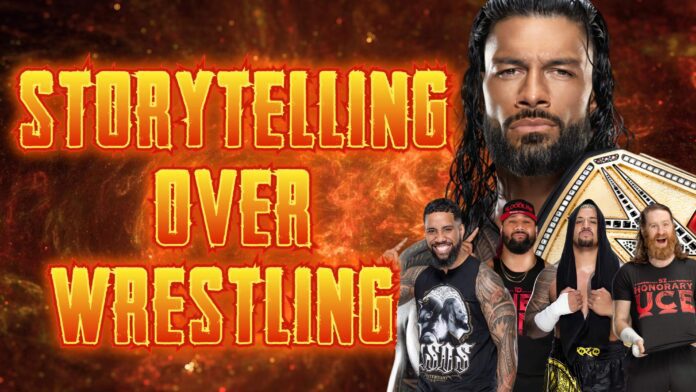In the world of professional wrestling, there is often an ongoing debate about what is more important: the actual in-ring action or the art of storytelling. While the physicality and athleticism of the wrestlers cannot be denied, it is the power of storytelling that truly captivates audiences and keeps them invested in the product.
At its core, professional wrestling is a form of entertainment. It is not simply a display of athletic prowess or a demonstration of physical strength, but rather a carefully crafted narrative performed in a theatrical manner. The wrestling ring becomes a stage, and the wrestlers are the actors who bring the story to life. It is through storytelling that the audience forms emotional connections with the characters and becomes invested in their journeys.
Storylines and character development are the driving forces behind successful wrestling promotions. Fans tune in week after week to see their favorite wrestlers engage in feuds, rivalries, and alliances. These storylines create drama, tension, and excitement. They give the matches purpose and meaning, making the outcome of each bout feel consequential. Without compelling storylines, the in-ring action can lose its impact and become nothing more than a series of acrobatic displays.
Storytelling in wrestling also allows for character development. Wrestlers are given the opportunity to develop their personas, crafting unique backstories, motivations, and personalities. This allows them to connect with the audience on a deeper level. Fans become emotionally invested in the journey of their favorite characters, rooting for them in moments of triumph and empathizing with their struggles. It is this emotional investment that sustains the popularity of wrestling and keeps fans coming back for more.
Furthermore, storytelling in wrestling opens the door for social commentary, exploring relevant issues and themes. Wrestlers often embody archetypes or caricatures that reflect societal norms, cultural values, or prevailing trends. By weaving social commentary into their storylines, wrestling promotions can engage with their audience on a deeper level and spark conversations about important topics. This integration of storytelling and social commentary amplifies the impact of wrestling as a form of entertainment and provides a platform for meaningful discussions.
Although the physicality and athleticism of wrestling are undeniable, they are only part of the equation. The true magic of professional wrestling lies in its ability to weave captivating narratives that resonate with the audience. It is through storytelling that wrestlers can transcend their athletic abilities and connect with fans on an emotional level. The storylines, character development, and social commentary create a rich tapestry that elevates wrestling beyond mere physical competition.
In conclusion, storytelling is undeniably more important than the actual wrestling in professional wrestling. While the physicality and athleticism are impressive, it is the power of storytelling that truly captivates audiences and keeps them invested in the product. Storylines, character development, and social commentary bring depth, purpose, and meaning to the in-ring action, allowing wrestling to transcend the realm of sports entertainment and become a form of artistic expression. Without storytelling, wrestling would simply be a collection of athletic performances, lacking the narrative structure that engages and resonates with fans.







